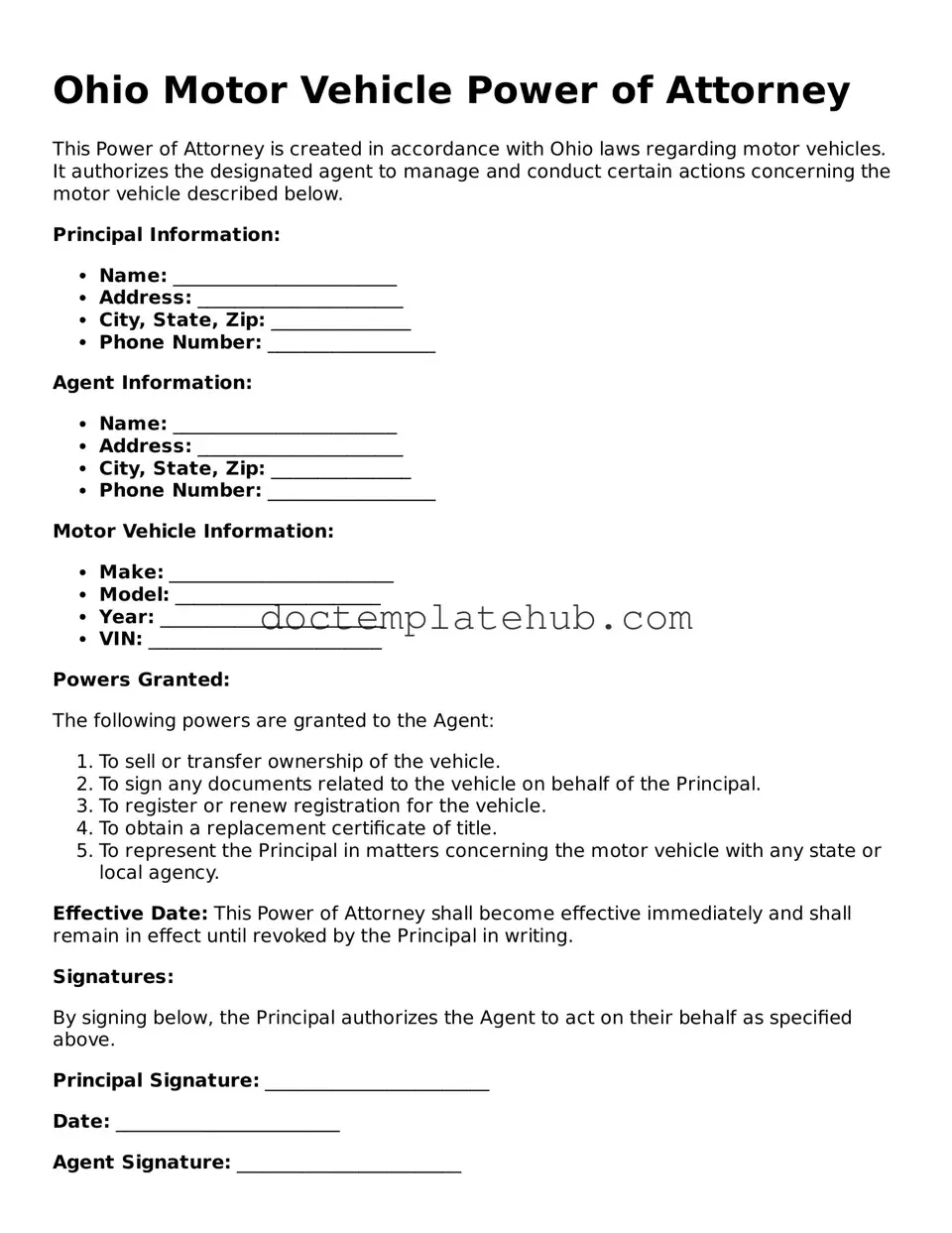What is the Ohio Motor Vehicle Power of Attorney form?
The Ohio Motor Vehicle Power of Attorney form is a legal document that allows an individual (the principal) to appoint another person (the agent) to act on their behalf in matters related to motor vehicles. This includes tasks such as signing documents for the sale or transfer of a vehicle, registering a vehicle, or obtaining title documents.
Who can be appointed as an agent in this form?
Any competent adult can be appointed as an agent in the Ohio Motor Vehicle Power of Attorney form. This may include family members, friends, or professionals such as attorneys. The principal should choose someone they trust to handle their motor vehicle matters responsibly.
Is the Ohio Motor Vehicle Power of Attorney form valid in other states?
While the Ohio Motor Vehicle Power of Attorney form is specifically designed for use in Ohio, it may be recognized in other states. However, it is advisable to check the laws of the state where the agent will be acting to ensure compliance with local regulations.
How long is the Ohio Motor Vehicle Power of Attorney form valid?
The validity of the Ohio Motor Vehicle Power of Attorney form typically lasts until the principal revokes it, the purpose is fulfilled, or the principal passes away. It is important for the principal to communicate any changes to the agent and ensure that the document is updated as necessary.
What specific powers can be granted to the agent?
The principal can grant various powers related to motor vehicles, such as signing documents for the sale or transfer of a vehicle, applying for a duplicate title, and registering or renewing vehicle registrations. The principal can specify the extent of these powers in the form.
Do I need to have the Ohio Motor Vehicle Power of Attorney form notarized?
Yes, the Ohio Motor Vehicle Power of Attorney form must be notarized to be considered valid. Notarization provides an additional layer of verification, ensuring that the signatures on the document are legitimate and that the principal is acting voluntarily.
Can the principal revoke the Ohio Motor Vehicle Power of Attorney?
Yes, the principal can revoke the Ohio Motor Vehicle Power of Attorney at any time, as long as they are competent to do so. To revoke the document, the principal should provide written notice to the agent and any relevant third parties, such as the Bureau of Motor Vehicles.
What happens if the principal becomes incapacitated?
If the principal becomes incapacitated, the Ohio Motor Vehicle Power of Attorney remains valid unless the document specifies otherwise. It is crucial for the principal to consider their wishes regarding the agent's authority in the event of incapacitation when completing the form.
Can multiple agents be appointed in the Ohio Motor Vehicle Power of Attorney?
Yes, the principal can appoint multiple agents in the Ohio Motor Vehicle Power of Attorney form. However, it is essential to specify whether the agents must act jointly or if they can act independently. Clear instructions will help avoid confusion in the execution of the powers granted.
Where can I obtain the Ohio Motor Vehicle Power of Attorney form?
The Ohio Motor Vehicle Power of Attorney form can typically be obtained from the Ohio Bureau of Motor Vehicles (BMV) website or local BMV offices. Additionally, legal form websites may offer downloadable versions of the form. Ensure that you are using the most current version available.
